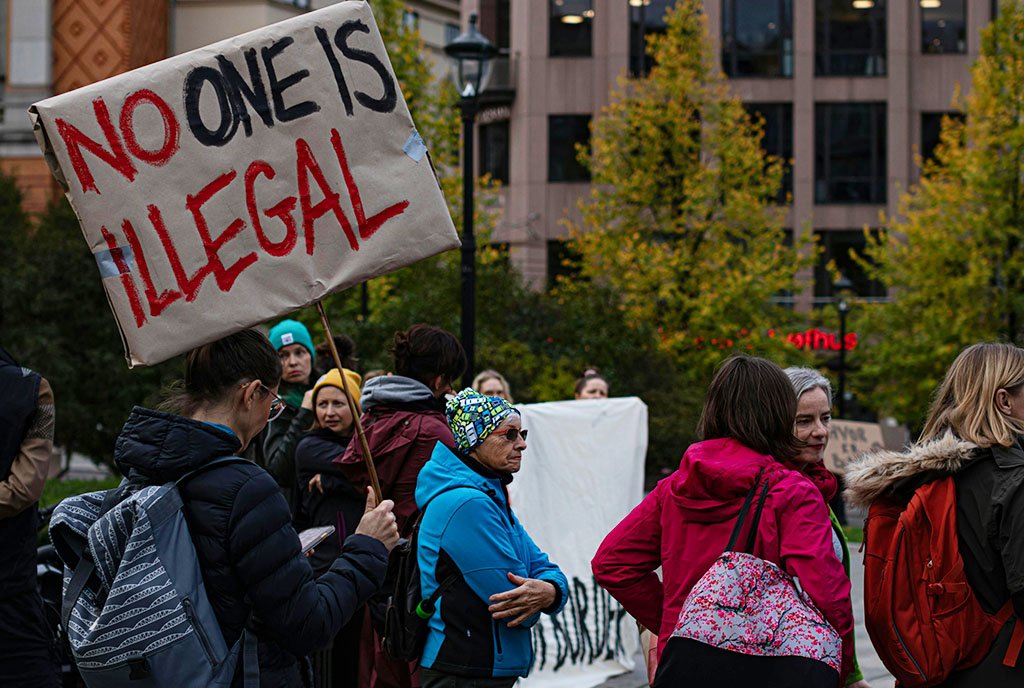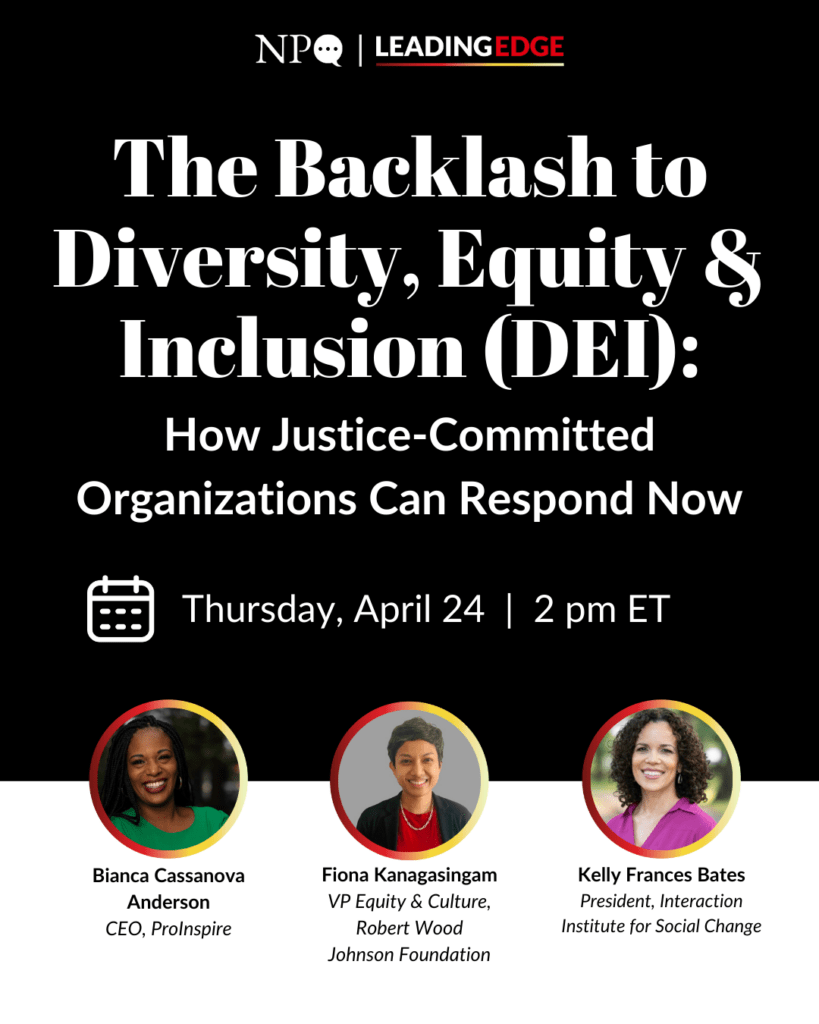
Nearly four months into the new Trump administration, immigrants—from undocumented migrants to immigrant residents authorized to be in the United States—face a crisis unprecedented in modern times. Trump and his allies continue to roll out a campaign of crackdowns, deportations, and scapegoating of immigrant communities, especially immigrants of color.
Long before the last US election, immigrant communities were already facing heightened scrutiny and enforcement actions.
New York’s Immigrant Defense Project (IDP) has been at the forefront of defending immigrant rights since its inception in 1994, and more recently has been one of the most vocal groups in challenging New York Mayor Eric Adams’s attempts to curtail rights to shelter for migrants arriving in the city—as well as other anticipated moves to cooperate with the Trump administration’s agenda.
As nonprofits, mutual aid groups, and activist movements across the country mobilize to protect migrants and immigrants, IDP’s executive director, Marie Mark sat down with NPQ to share lessons learned and strategies to help protect immigrant communities amid the ongoing battle to protect their rights.
Preparing for Trump 2.0
Long before the last US election, immigrant communities were already facing heightened scrutiny and enforcement actions, including increasing waves of deportations. With attempts to thwart immigrant rights continuing in 2025, Mark and her team were prepared as Trump took office. While not surprised by current events, IDP is alarmed.
“Under the Biden administration, hundreds of thousands of people were deported,” Mark says. “Biden also used a kind of false conflation of public safety policy and immigration policy that targets people of color. Now, we are starting to see that many of the things that we’ve been sounding the alarm about for years are coming into the forefront.”
One way IDP is able to respond quickly and efficiently to threats made against the immigrant communities is through their hotline. This non-live phone number allows callers to leave anonymous tips and helps IDP track immigration enforcement tactics, trends, and developments of immigrant rights issues on the ground. With it, the organization can better respond to changes in immigration enforcement.
“I think one of the most successful things that we did during the [first] Trump administration…was that we were really paying attention to what the trends were on our hotline,” Mark says. “We started to identify what an ICE [Immigration and Customs Enforcement] raid looks like in order to be able to share that information. And that happened pretty organically for us.”
To help prepare, IDP tracks ICE activities, especially around surveillance and home visits. Data shows that ICE commonly arrives at people’s homes in the early hours of the morning, when people are likely to be disoriented. The agency will often coerce people to open their doors, claiming that their identity has been stolen or that they’ve been accused of a crime.
But where local government can be a source of collusion and collaboration with federal officials…it can also be a source of powerful resistance.
“This is a ruse,” Mark says. “When someone comes to their door, they might be being lied to.”
IDP’s hotline helps them to identify other patterns of coercion of immigrant communities, like scams where immigrants may be financially vulnerable.
To counteract misinformation, rumors, and disinformation, the organization produces community defense resources that help people know their own rights, and how to protect themselves amid “a broad campaign to make everyone afraid.”
A Framework of Local Power
IDP remains deeply concerned about the continued collaboration between federal, state, and local resources for civil immigration enforcement. Mark emphasizes that this collusion has been one of the most insidious aspects of the ongoing fight against immigrant communities.
Sign up for our free newsletters
Subscribe to NPQ's newsletters to have our top stories delivered directly to your inbox.
By signing up, you agree to our privacy policy and terms of use, and to receive messages from NPQ and our partners.
“The federal government co-opts resources that should be used for state and local purposes, such as schools and housing and things that people need in their everyday lives and depend on their local and state governments to provide,” Mark says. “Those resources get diverted to civil immigration enforcement, which we know actually makes communities less safe. It tears families apart; it makes communities less stable.”
But where local government can be a source of collusion and collaboration with federal officials, Mark notes, it can also be a source of powerful resistance.
IDP advises leveraging local laws and regulations to create a protective framework for immigrant communities. Among other victories, IDP’s past efforts have resulted in positive changes, including the passage of the One Day to Protect New Yorkers Act, which amended the maximum sentence for certain misdemeanors. This change has prevented deportation for many immigrants. The organization was also instrumental in passing the Protect Our Courts Act in 2022, which prevents ICE from using New York’s courts as sites for immigration enforcement.
“I think this kind of change can happen,” Mark says, referring to how other states may be able to create similar laws. “It’s not a huge change in terms of what you’re really asking of your state, but it can have a huge immigration impact.”
Operating in the Digital Age
For organizations operating in the digital age, securing data is imperative. With many IDP staff working remotely and on personal devices, maintaining stringent cybersecurity measures has become increasingly difficult. Mark notes that securing communications and protecting against government surveillance are necessary steps to ensure organizational resilience and protect sensitive data.
“We’re a hybrid organization, so we have a lot of people working from their homes,” Mark says. “We need to make sure that those devices meet the kind of security standards we’ve set for the office and that takes not only resources, but a set of expertise that is not generally held within small organizations.”
Mark notes that staff are increasingly alarmed about information used internally, especially with the rise of artificial intelligence (AI).
“Information staff is using for internal use only is getting used by some of these machine learning programs,” Mark says. “Data security is a huge hurdle. We keep people’s confidential data at IDP, so this is a big concern for us.”
“What we’re seeing from our own staff…just weeks into the new administration, is that this work has a human toll.”
A Call for Support
When it comes to funding, immigration tends not to be a priority for foundations. But, according to Mark, philanthropy must begin to see immigration as an issue of importance to society as a whole, not a niche issue revolving around one beleaguered population.
“What we’ve seen from some of our best champion funders is really talking about immigration as not a standalone issue for a small group but recognizing the way in which this moment is really a threat, to everyone,” Mark says.
Meanwhile, in order for organizations such as IDP to succeed, they need more than occasional and emergency-driven influxes of funds; they need dedicated funding toward long-term organizational stability. Mark emphasizes the need for coordinated efforts, secure infrastructure, and investments in staff retention to meet the challenges of defending immigrant rights in a hostile climate.
“What we’re seeing from our own staff, even now, just weeks into the new administration, is that this work has a human toll.”









